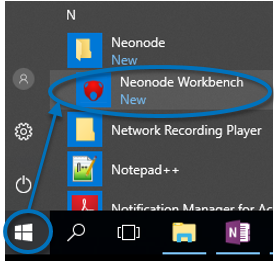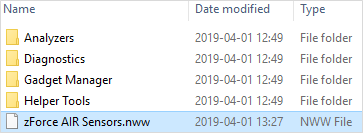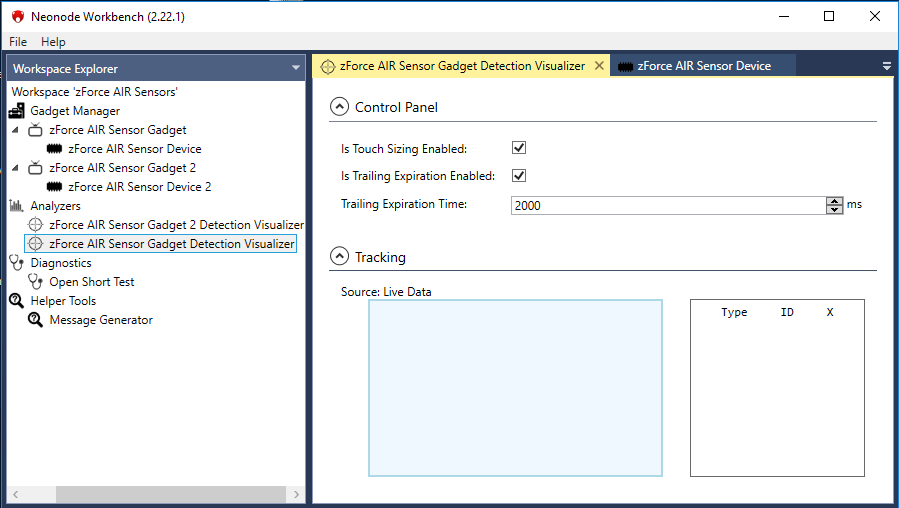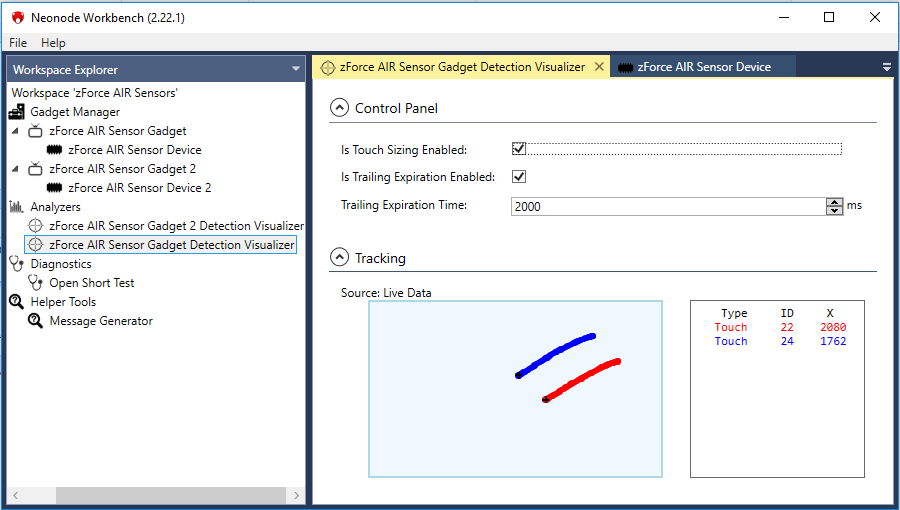Required Equipment
| Include Page | ||||
|---|---|---|---|---|
|
Additional required equipment:
- Computer
- Operating system: Windows 8.1 or Windows 10.
- Software requirements: .NET Framework 4.5 or higher is required and can be downloaded from Microsoft's official website. Windows 8 and higher has this installed by default.
Connecting Sensor Module
| Include Page | ||||
|---|---|---|---|---|
|
Install and Open Neonode Workbench
- Download the latest release of the Workbench installation package from Downloads.
- Unzip the installation package.
- Open the installation package folder.
- Run the Workbench installer (.msi file) and follow the instructions.
- Open the installation package folder again.
Unzip the Workspace folder to a location where you have write permissions. Write permissions are required to save settings and user data.
Info In order for the Workbench application to operate, the files in the Workspace folder must be kept together. Move the entire folder if you want to relocate the workspace file.
- Open the Neonode Workbench application.
- From the toolbar, select File >> Open Workspace.
- Navigate to the Workspace folder and double-click the .nww file inside the folder.
Visualizing Touches with Workbench
- In the left panel of the workspace, double-click zForce AIR Sensor Gadget Detection Visualizer. A tab with two sections, Control Panel and Tracking, opens in the right panel.
- If either section in the right panel is collapsed, click to expand it.
- In the right panel
- Enable or disable Touch Sizing. With Touch Sizing enabled, the size of a detected object is indicated by the size of the tracking cursor.
- Enable or disable Trailing Expiration. With Trailing Expiration enabled, the trail of a detected object is shown, indicating its movement.
- Move one or more fingers or other objects in the active area of the sensor module. The registered touches show on the canvas. Type, ID an x- and y-coordinates of each touch is shown to the right of the canvas.
In Workbench, you can also
- Access sensor information such as firmware version.
- Configure the sensor module to explore different configurations.
- Perform a test to identify any damaged laser or photo diodes.
- Generate sensor messages in hexadecimal format without understanding the structure of the communication protocol message.
For further information, please refer to Workbench documentation.





